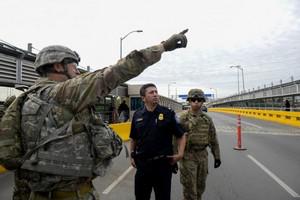ImmigrationJudge Allows Administration’s Restrictive Asylum Rule to Stand
A federal judge on Wednesday said he would not block a new rule which effectively bars most migrants from Central America and other countries from seeking asylum at the U.S.-Mexico border. Analysts say the rule amounts to a seismic change in U.S. approach to asylum seekers. The rule restricts access to the U.S. asylum system for non-Mexican migrants who traveled through Mexico and other countries in order to reach the U.S. border — but who did not seek protection in those nations.

A federal judge on Wednesday said he would not block a new rule which effectively bars most migrants from Central America and other countries from seeking asylum at the U.S.-Mexico border.
Analysts say the rule amounts to a seismic change in U.S. approach to asylum seekers.
The Trump administration can now begin to implement its most ambitious effort to overhaul the asylum system without changes to U.S. law.
The Hill reports that Judge Timothy Kelly of the U.S. District Court in Washington, D.C. denied a request by several pro-immigrant advocacy groups to issue an temporary order to block the controversial new asylum policy.
The new rule — called “interim final rule” — went into effect last week. It restricts access to the U.S. asylum system for non-Mexican migrants who traveled through Mexico and other countries in order to reach the U.S. border — but who did not seek protection in those nations. The government argued that the rule was designed to limit what some call “forum shopping by economic migrants,” that is, the decision that migrants make regarding what country the seek asylum in. Immigration restrictionists argue that migrants prefer to seek asylum in the United States rather than in other countries along their journey, countries which may also be able to offer them asylum.
The rule aims to check to flow of migrants from Honduras, Guatemala, and El Salvador, but it would also affect migrants from other countries trying to reach the United States through Mexico — including Cubans, Venezuelans, Brazilians, and central Africans.
Migrants who could prove they were victims of a “severe” form human trafficking or that they applied for protection in a third country and were later denied would be exempt from the rule.
The joint regulation by DoJ and DHS is a fundamental change in the asylum system for border crossers. Before the rule, migrants who crossed into the United States illegally were allowed to claim asylum after being apprehended by Border Patrol officers. Most asylum-seeking families were released from immigration custody after less than twenty days in detention and allowed to remain in the United States while their cases were being processed.
